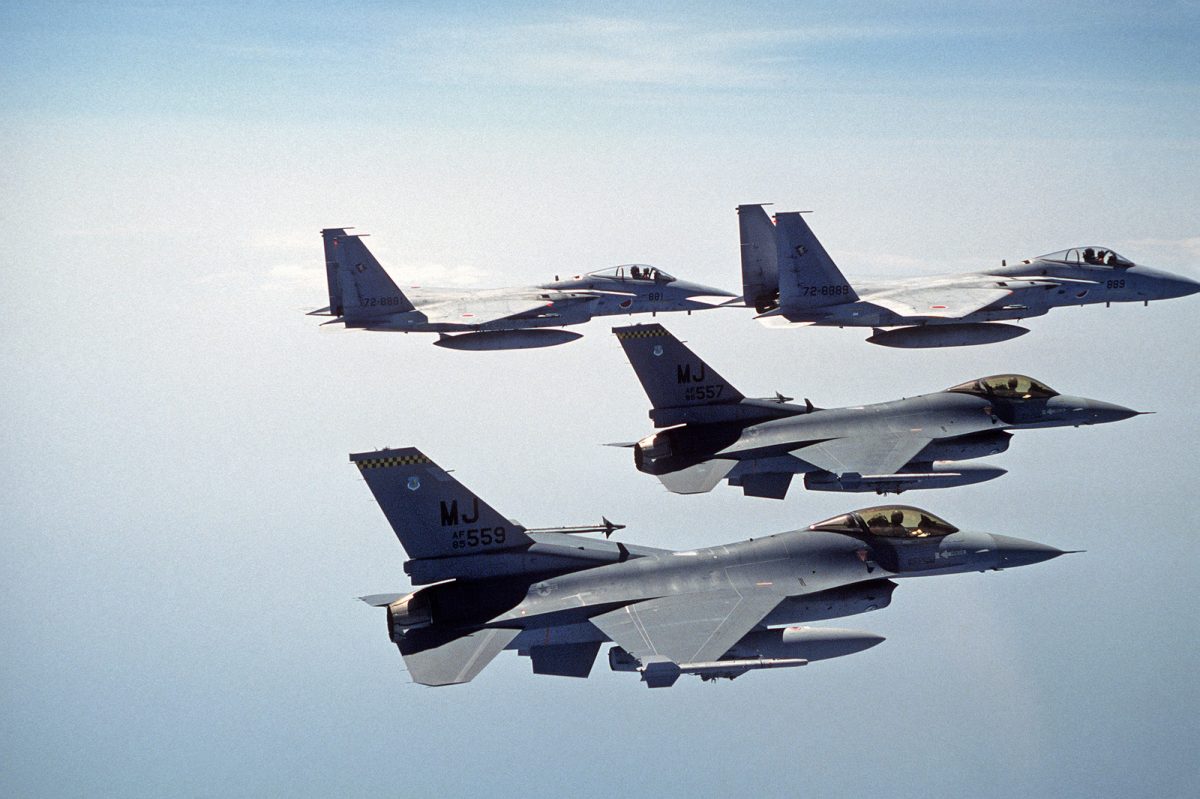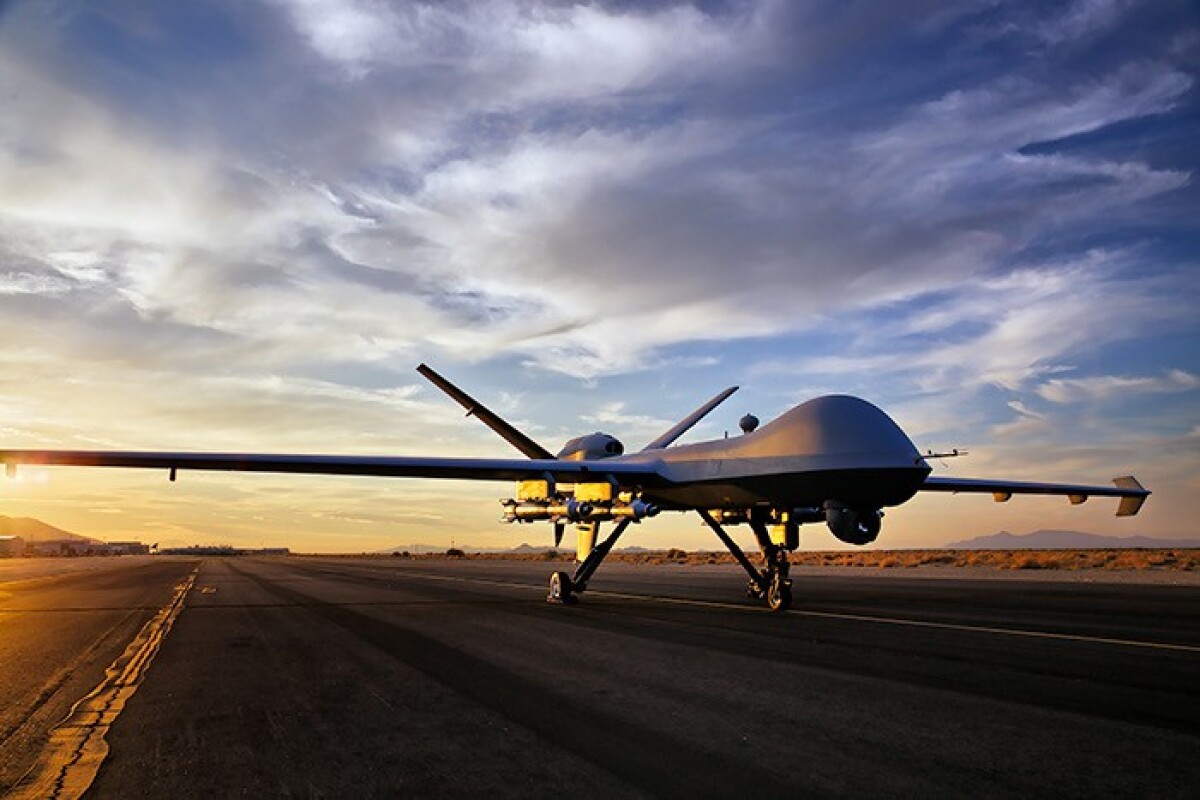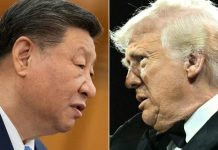As Taiwan continues its efforts to fend off Chinese warplanes violating its airspace, there is another country in the Indo-Pacific that has been facing similar intrusions for over nine months now.
Between April and December last year, Japan Air Self-Defense Force (ASDF) fighters intercepted a record number of foreign aircraft approaching their airspace. And the majority of the incidents involved Chinese military aircraft flying over the islands of Okinawa, reported the SCMP.
The Chinese aggression against Japan escalated shortly after the PLA Air Force started sending aircraft into Taiwan’s Air Defense Identification Zone (ADIZ). Beijing sees Taiwan as a breakaway province, which it wants to annex even by force. It may be safe to speculate that Chinese incursions in Okinawa might be in part due to the US-Japan support to Taiwan.

According to the Defense Ministry of Japan, the ASDF fighters intercepted 785 inbound flights in the past nine months (2021), the greatest number compared to the previous five years for the same time. In total, there were more than 725 incidents in the 2020-2021 fiscal year.
During the nine-month period, Japanese fighters were ordered to engage Chinese aircraft 571 times, an increase of 240 events from the previous year and accounting for more than 70% of the cases.
With 199 instances, interceptions of Russian aircraft accounted for the remaining cases. However, this figure was down seven from the previous year.
Pattern Of Aggression
Garren Mulloy, a defense expert and professor of international relations at Daito Bunka University, said the rising number of cases appeared to be a continuation of an “incremental” trend seen in southwest Japan over the last decade or so, coinciding with a dispute between Tokyo and Beijing over uninhabited islands in the East China Sea.
The Chinese interest in the southwestern part of Japan could be due to its proximity to Taiwan. In fact, some media reports had suggested last month that the US and Japan were drawing plans to launch an attack from territory in southwestern Japan, incidentally the same location where maximum aerial transgressions from Chinese warplanes were recorded.
Similarly, Chinese intrusions near Okinawa Island could not be a mere coincidence. China claims the Okinawa Islands that have traditionally been under the jurisdiction of and, administered by Japan.
There are about 32 US military bases in Okinawa Island, which China sees as detrimental to its security interests. In fact, about 62% of all US bases in Japan are in Okinawa.

Chinese aircraft, working alongside coast guard ships, have tested Japanese reactions around the Senkaku Islands. Beijing claims ownership over the islands and calls them Diaoyus.
“This increase is pretty much in line with what we have seen before, but it is difficult to know from the data the number of situations in which they did not scramble units last year under the new policy for interceptions,” Mulloy said.
When radar spotted PLAAF aircraft taking off from military sites in China’s Fujian region, Japanese fighters would launch from Kadena Air Base in Okinawa. Because the flying time to the Senkaku Islands was comparable to the time it would take the Chinese to reach the area, the ASDF needed to act quickly.
“But the Chinese military is now flying so frequently all along the coast that it was becoming impossible for the Japanese to respond to every take-off,” Mulloy said. “It would very quickly have exhausted the Japanese aircraft and their pilots.”
#Japan reveals 3 sea-based alternatives for scrapped Aegis Ashore plan
"We plan to deploy the interception system on a mobile platform in the ocean & we'll look into the specifics with the #US & suppliers in a prompt manner," Defense Minister Nobuo Kishihttps://t.co/bhUK9uTVxA pic.twitter.com/zSA9HTcDcR
— Indo-Pacific News – Watching the CCP-China Threat (@IndoPac_Info) September 27, 2020
Japan mostly uses its F-15 Eagles for intercepting Chinese and Russian warplanes. Additionally, in the face of a growing security threat, Japan is modernizing and upgrading its existing fleet of F-15 Eagles, as previously reported by the EurAsian Times.
To monitor the vast oceans surrounding the Japanese archipelago, the powerful twin-engine fighters combine quick speed, modern radars, and substantial fuel and armament loads.

According to Mulloy, the new parameters for ordering a scramble require foreign aircraft to approach Japan’s Air Defense Zone or airspace over the East China Sea.
“This means the number of predictive scrambles has been reduced, which means that the increase we have seen in the last nine months were direct approaches to Japanese airspace rather than what might be termed ambient threats, so the increase in the overall number of flights detected would have been even higher,” he added.
So even though the numbers registered are alarming and present a picture of growing Chinese aggression in the region, these figures are just the tip of the iceberg and actual numbers could be higher.
Chinese-Russia Axis Against Japan
Another source of concern in Tokyo is the growing coordination between the Chinese and Russian militaries, as seen in last year’s joint exercises in the Sea of Japan and subsequent circumnavigation of the archipelago by Chinese and Russian vessels.
“That, to Tokyo, is very worrying as it is more difficult to assess the scale of the threat and Japanese fighters would have to scramble in two or even three directions to meet a series of threats,” Mulloy pointed out.
China and Russia conduct joint naval drills in Sea of Japan: China and Russia wrapped up joint naval drills on October 17, 2021, near the Peter the Great Gulf in the Sea of Japan, or East Sea. Two destroyers, a submarine and two corvettes were some of the vessels Beijing sent to pic.twitter.com/iyyKNVf8Uc
— World News 24 (@DailyWorld24) October 19, 2021
The study on increased approaches to Japanese airspace is being released at the same time as the announcement that Japan and the US will deploy Reaper drones at an SDF base for the first time.
Within the next few weeks, seven MQ-9 drones built by General Atomics will be stationed at the Maritime Self-Defense Force facility in Kanoya, Kagoshima prefecture.

The coast guard currently operates a fleet of 33 fixed-wing aircraft and 52 helicopters, which means its equipment is stretched thin at a time when demand is increasing, particularly in southwest Japan, according to SCMP.
Aside from new weaponry, the Japanese government has declared that it will begin work on building Mageshima Island, off the coast of Kagoshima Prefecture, as an SDF base that will also be available for drills by US forces.
In the latter phases of World War II, the uninhabited island was utilized as an airport for Japanese airstrikes against allied forces invading Okinawa, but the facilities there will need to be completely rebuilt.
The plan for US fighter planes that are currently obliged to go to Iwo Jima to practice landings is to perform drills much closer to their home bases. Mageshima is also much closer to Okinawa, making it an ideal staging station in the case of a military emergency in southern Japan.
So while both China and Russia that have territorial conflicts with Japan and interests in the East China Sea have upped the ante, Japan and United States have focused on strengthening their defenses and expanding their potential launch pads for carrying out an offensive if the situation so warrants.
However, an enhanced American presence in and around the Japanese archipelago and especially close to areas of Chinese interest could mean more PLAAF incursions in days to come.
- Contact the author at sakshi.tiwari9555@gmail.com
- Follow EurAsian Times on Google News




